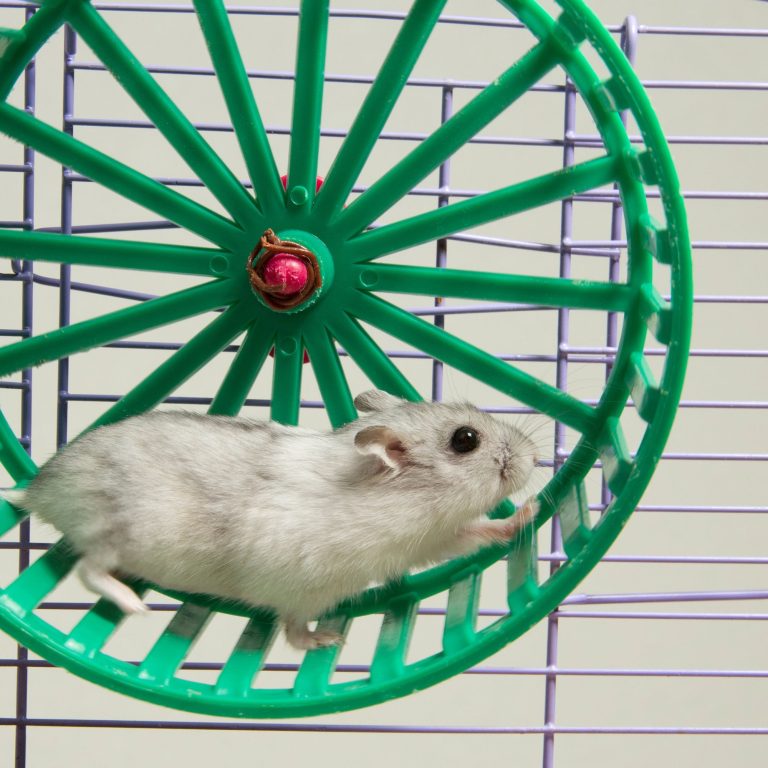Keeping Tabs on Your Furry Friend: Pet Health Monitoring for Seniors
Pet Health Monitoring for Seniors
As a senior pet owner, pet health monitoring is essential for ensuring the well-being of your furry friend. Monitoring your pet’s health can help you detect any potential issues early on and provide timely care. Fortunately, advancements in technology have made it easier than ever to keep tabs on your pet’s health.
The Importance of Pet Health Monitoring
Regular monitoring of your pet’s health is crucial, especially as they age. Just like humans, pets can experience age-related health issues that may require special attention and care. By monitoring your pet’s health, you can:
- Detect early signs of illness: Monitoring your pet’s health allows you to spot any changes in behavior, appetite, or physical condition that may indicate an underlying health problem. Early detection can lead to prompt veterinary care and better treatment outcomes.
- Track ongoing health conditions: If your pet has a chronic health condition, such as arthritis or diabetes, regular health monitoring can help you track their progress and ensure that their treatment plan is effective.
- Provide preventive care: By monitoring your pet’s health, you can stay proactive in preventing potential health issues. This may involve maintaining a healthy weight, ensuring proper nutrition, and staying up to date with vaccinations and preventive medications.
How Technology Can Help
Innovative pet health monitoring technology has revolutionized the way we care for our pets. These technological advancements offer various tools and devices designed to assist in monitoring and managing your pet’s health. Some ways technology can help include:
- Tracking your pet’s activity: Wearable devices, such as activity trackers, can provide insights into your pet’s daily exercise, sleep patterns, and overall activity levels. This information allows you to ensure that your pet is getting enough exercise and identify any changes in their activity level that may indicate health issues. Check out our article on elderly-friendly pet tech for more information.
- Monitoring your pet’s vital signs: Smart collars and tags equipped with sensors can monitor your pet’s vital signs, such as heart rate, respiration rate, and body temperature. These devices can help you identify any abnormal readings and alert you to potential health concerns. Learn more about the benefits of vital sign monitoring in our article on pet tech for elderly.
- Remote health monitoring: Pet cameras and surveillance systems allow you to remotely monitor your pet’s activities and behavior when you’re not at home. This can help you ensure their well-being and provide peace of mind. Discover the benefits of remote health monitoring in our article on pet cameras for seniors.
- Pet health apps and software: Health tracking and management apps can help you keep all your pet’s health information in one place. These apps allow you to track vet appointments, medications, vaccinations, and more, making it easier to stay organized and ensure your pet receives the necessary care. Explore the features and benefits of pet health apps in our article on pet technology for seniors.
By embracing the advancements in pet health monitoring technology, you can play an active role in maintaining your pet’s health and well-being. However, it’s important to consider factors such as ease of use, compatibility with your lifestyle, and your pet’s individual needs when choosing the right pet health monitoring technology. For guidance on finding the best fit for you and your pet, refer to our article on pet tech devices for seniors. With the right tools and resources, you can provide the best care for your beloved pet, ensuring their health and happiness for years to come.
Tracking Your Pet’s Activity
As an elderly pet owner, tracking your pet’s activity can provide valuable insights into their overall health and well-being. By monitoring their activity levels, you can ensure they are getting enough exercise and detect any changes in behavior that may indicate potential health issues. Fortunately, innovative technology has made it easier than ever to keep tabs on your furry friend’s activity.
Wearable Devices for Activity Monitoring
One of the most effective ways to track your pet’s activity is through the use of wearable devices designed specifically for this purpose. These devices, such as activity trackers or smart collars, provide real-time data on your pet’s movement, exercise, and sleep patterns.
Activity trackers for pets are typically lightweight and attach securely to your pet’s collar or harness. They utilize sensors to monitor your pet’s movements, including steps taken, distance traveled, and even calories burned. Some advanced trackers can even detect specific behaviors like running, playing, or resting. The data collected by these devices can be accessed through a companion mobile app or web portal, allowing you to easily track your pet’s activity levels over time.
Benefits of Tracking Your Pet’s Activity
Tracking your pet’s activity offers several benefits for both you and your furry companion. Here are some key advantages:
-
Health Monitoring: Regularly monitoring your pet’s activity can help you identify any changes in behavior or activity levels that may indicate an underlying health issue. By detecting potential problems early on, you can seek veterinary care promptly, improving the chances of successful treatment.
-
Weight Management: Obesity is a common issue among pets, which can lead to various health problems. By tracking your pet’s activity, you can ensure they are getting enough exercise and adjust their diet accordingly, helping them maintain a healthy weight.
-
Behavioral Insights: Changes in activity levels can sometimes be an indication of stress, anxiety, or other behavioral issues in pets. By monitoring their activity patterns, you can gain insights into their behavior and identify any potential triggers or areas of concern.
-
Bonding and Engagement: Tracking your pet’s activity can provide opportunities for increased bonding and engagement. You can set activity goals for your pet and participate in activities that align with their needs, promoting a healthy and active lifestyle for both of you.
Remember, when choosing a wearable device for your pet, consider factors such as comfort, durability, battery life, and compatibility with your smartphone or other devices. It’s also essential to consult with your veterinarian to ensure that the chosen device is suitable for your pet’s specific needs.
By utilizing wearable devices for activity monitoring, you can stay informed about your pet’s daily exercise routine, gain insights into their behavioral patterns, and take proactive steps to maintain their health and happiness.
Monitoring Your Pet’s Vital Signs
When it comes to ensuring the well-being of your furry companion, monitoring their vital signs is an essential aspect of pet health care. By keeping tabs on their vital signs, you can detect any potential health issues early on and take appropriate action. Thankfully, with the help of modern technology, there are several smart collars and tags available that enable vital sign monitoring for your pet.
Smart Collars and Tags for Vital Sign Monitoring
Smart collars and tags equipped with sensors can track various vital signs of your pet, providing you with valuable insights into their overall health. These devices are designed to monitor metrics such as heart rate, respiratory rate, and body temperature.
Using non-invasive methods, these smart collars and tags collect data on your pet’s vital signs throughout the day. The information is then transmitted to a companion mobile app or a dedicated device, allowing you to easily access and track your pet’s health data. Some devices even offer real-time monitoring, alerting you if any abnormal readings are detected.
Understanding the Benefits of Vital Sign Monitoring
Monitoring your pet’s vital signs can offer several benefits for their well-being. Here are a few key advantages:
-
Early Detection of Health Issues: By regularly monitoring your pet’s vital signs, you can detect any changes or abnormalities early on. This allows for prompt medical attention, potentially preventing the progression of serious health conditions.
-
Peace of Mind: As a pet owner, it’s natural to worry about your furry friend’s health. Vital sign monitoring provides peace of mind by giving you a better understanding of their overall health status. You can track their vital signs and ensure they are within the normal range.
-
Improved Communication with Veterinarians: When you visit your veterinarian, having access to your pet’s vital sign data can greatly assist in diagnosing and treating any health concerns. It provides your veterinarian with valuable information about your pet’s condition and aids in making informed decisions regarding their care.
While vital sign monitoring through smart collars and tags is a valuable tool, it’s important to note that these devices should not replace regular veterinary check-ups. They are meant to complement professional healthcare and provide additional insights into your pet’s well-being.
By investing in pet health monitoring technology, you can actively participate in your pet’s care and take proactive steps towards maintaining their health. Remember to consider factors such as ease of use, compatibility with your devices, and the specific vital signs monitored when choosing the right device for your pet. For more information on pet technology for seniors, visit our article on pet tech for elderly.
Remote Health Monitoring
As a senior pet owner, remote health monitoring can be an invaluable tool in keeping tabs on your furry friend’s well-being. This technology allows you to monitor your pet’s health and behavior from a distance, giving you peace of mind and enabling prompt intervention when needed. Two popular options for remote health monitoring are pet cameras and surveillance systems.
Pet Cameras and Surveillance Systems
Pet cameras and surveillance systems provide a way for you to keep an eye on your pet even when you’re not physically present. These devices allow you to remotely view and monitor your pet’s activities through video streaming. With features like two-way audio, you can even communicate with your pet and offer reassurance or give commands.
Pet cameras and surveillance systems come in various forms, including standalone cameras and integrated systems that connect to your smartphone or computer. Some advanced models offer features like motion detection, night vision, and even treat dispensing capabilities. By placing cameras strategically throughout your home or in specific areas where your pet spends time, you can easily observe their behavior and ensure their well-being.
Benefits of Remote Health Monitoring
Remote health monitoring through pet cameras and surveillance systems offers several benefits for senior pet owners. Here are a few advantages:
-
Peace of mind: Being able to check on your pet’s well-being remotely provides peace of mind, especially if you need to be away from home for extended periods.
-
Early detection of health issues: By monitoring your pet’s behavior through a camera, you may notice any changes in eating habits, mobility, or other signs of discomfort. Early detection of potential health issues allows for prompt veterinary intervention.
-
Interaction and entertainment: Pet cameras often feature interactive elements like two-way audio or the ability to dispense treats. These features allow you to interact with your pet, providing comfort, and mental stimulation even when you’re not physically present.
-
Security: In addition to monitoring your pet’s health, surveillance systems can also enhance the security of your home. Some cameras offer motion detection and can alert you to any unexpected activity or intruders.
When considering remote health monitoring options, it’s important to choose devices that are user-friendly and suitable for your specific needs. Factors to consider include ease of installation, compatibility with your devices, and any additional features that may be beneficial for your pet’s well-being. For more information on pet technology for seniors, check out our article on elderly-friendly pet tech.
By embracing the convenience and peace of mind provided by remote health monitoring, you can ensure that your furry companion receives the care and attention they deserve, even when you can’t be physically present.
Pet Health Apps and Software
In the world of pet health monitoring, health tracking and management apps have become increasingly popular among pet owners, including seniors. These apps provide a convenient and accessible way to monitor and manage your pet’s health right from the palm of your hand.
Health Tracking and Management Apps
Health tracking and management apps for pets offer a range of features and functionalities designed to keep you informed about your pet’s well-being. These apps allow you to track various aspects of your pet’s health, including their activity levels, nutrition, medications, and veterinary appointments.
By inputting relevant information into the app, such as your pet’s breed, age, and weight, you can receive personalized recommendations and reminders tailored to your pet’s needs. For example, the app may provide feeding guidelines, medication reminders, and exercise suggestions based on your pet’s specific requirements.
In addition, some apps also offer the ability to store medical records and share data with your veterinarian. This can be particularly beneficial for seniors who may have multiple pets or find it challenging to keep track of paper records. With the app, you can access your pet’s health history at any time and easily share it with your veterinarian during appointments.
Features and Benefits of Pet Health Apps
Pet health apps come with a variety of features and benefits that can greatly assist in monitoring and managing your pet’s health. Here are some key features commonly found in these apps:
-
Activity tracking: Many apps allow you to monitor your pet’s daily activity levels, providing insights into their exercise habits and overall fitness. Some apps even provide activity goals and allow you to compare your pet’s activity to similar pets.
-
Nutrition monitoring: These apps often offer tools to track your pet’s food intake and provide nutritional recommendations. You can input the type of food, portion sizes, and treats given to ensure your pet is receiving a balanced diet.
-
Medication reminders: With medication reminders, you can set up alerts to ensure your pet receives their medications on time. This can be especially helpful for seniors who may have multiple medications to manage.
-
Health history and records: Many apps allow you to store your pet’s medical records, including vaccinations, prescriptions, and past veterinary visits. This ensures that important information is easily accessible whenever needed.
-
Veterinary appointment reminders: These apps can send reminders for upcoming veterinary appointments, helping you stay on top of your pet’s healthcare needs.
By utilizing pet health apps, seniors can actively participate in their pet’s well-being and ensure they are providing the best possible care. However, it’s important to note that these apps should not replace veterinary care but rather complement it. Regular veterinary check-ups and consultations are still essential for maintaining your pet’s health.
When choosing a pet health app, consider factors such as ease of use, compatibility with your smartphone, and the specific features that align with your pet’s needs. Exploring different options and finding the app that works best for you and your pet will help you stay informed and proactive in managing their health.
Choosing the Right Pet Health Monitoring Technology
When it comes to selecting the right pet health monitoring technology, there are several factors to consider to ensure you find the best fit for you and your furry friend.
Factors to Consider
-
Ease of Use: Look for pet health monitoring devices and apps that are user-friendly and intuitive. As a senior pet owner, it’s essential to choose technology that doesn’t require extensive technical know-how. Opt for devices with clear instructions and simple interfaces.
-
Compatibility: Check the compatibility of the pet health monitoring technology with your existing devices, such as smartphones or tablets. Ensure that the technology you choose is compatible with your operating system and has the necessary connectivity options.
-
Features: Consider the specific features that are important to you and your pet. Some pet health monitoring devices offer activity tracking, while others focus on vital sign monitoring or remote health monitoring. Think about what aspects of your pet’s health you want to monitor and choose a device that aligns with those needs.
-
Accuracy: Look for pet health monitoring technology that provides accurate and reliable data. Read reviews and compare different devices to ensure that the technology you choose has a reputation for accuracy in measuring vital signs, activity levels, and other health metrics.
-
Battery Life: Consider the battery life of the pet health monitoring device. Longer battery life means less frequent charging and uninterrupted monitoring of your pet’s health. Look for devices with extended battery life to minimize any inconvenience.
-
Cost: Evaluate the cost of the pet health monitoring technology. Consider your budget and the value you place on the features offered. Remember that higher-priced options may not always be the best fit for your needs, so choose wisely based on what you can afford and what is most important to you.
Finding the Best Fit for You and Your Pet
To find the best pet health monitoring technology for you and your beloved companion, take the time to research different options, read reviews, and consider the factors mentioned above. By doing so, you can make an informed decision that aligns with your specific requirements.
Keep in mind that the needs of every pet and pet owner may vary, so what works for one may not work for another. It’s essential to choose a pet health monitoring device that suits both your lifestyle and your pet’s needs.
Remember to prioritize the health and well-being of your furry friend. Pet health monitoring technology is a valuable tool, but it should complement regular veterinary care and not replace it. Consult with your veterinarian to ensure that you are using the technology correctly and getting the most out of it.
By considering the factors that matter most to you, you can find the perfect pet health monitoring technology that helps you stay on top of your pet’s well-being and provides peace of mind for both you and your furry companion.







